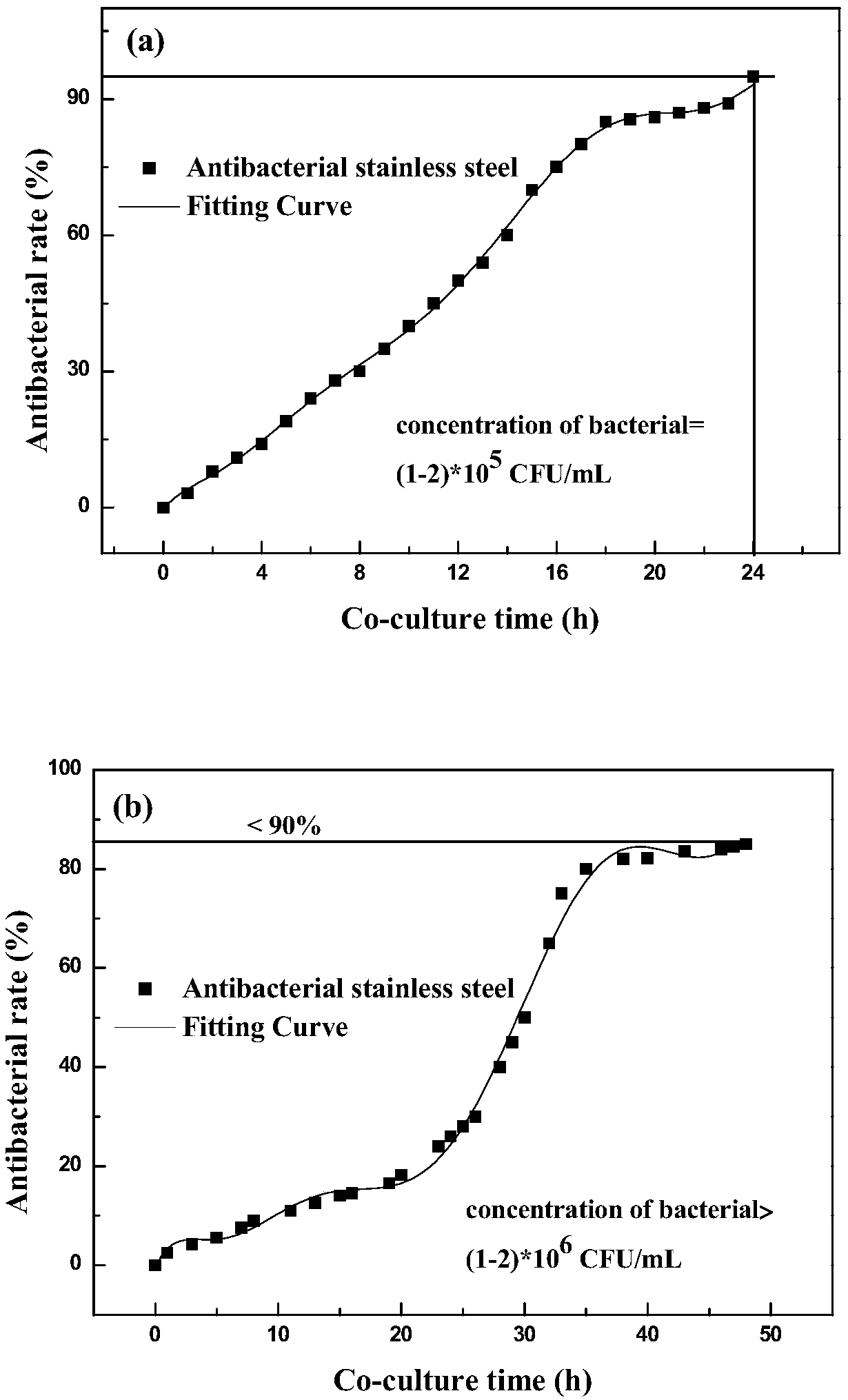Ultrahigh-antibacterial-performance titanium alloy applied to medical implant and manufacturing method of ultrahigh-antibacterial-performance titanium alloy
A titanium alloy and implant technology, which is applied in the field of medical titanium alloy material implants, can solve the problems of high-concentration bacteria and microorganisms whose sterilization rate cannot reach 90%, poor wear resistance, and low strength, so as to reduce the number of kills The effect of action time
- Summary
- Abstract
- Description
- Claims
- Application Information
AI Technical Summary
Problems solved by technology
Method used
Image
Examples
Embodiment Construction
[0020] According to the chemical composition range set by the ultra-high antibacterial performance titanium alloy material, the present invention adopts 15 kg vacuum induction furnace to smelt 10 kg each of the forged titanium alloy material of the embodiment and the comparative example, and its chemical composition is shown in Table 2.
[0021] The main chemical composition (wt.%) of the titanium alloy material of table 2 embodiment and comparative example
[0022]
[0023] According to the parameter range of the heat treatment method set by the ultra-high antibacterial performance titanium alloy material of the present invention, the detailed parameters of the solution heat treatment formulated are shown in Table 3.
[0024] The heat treatment process parameter of table 3 embodiment and comparative example
[0025]
[0026] 1. In vitro antibacterial performance test
PUM
 Login to View More
Login to View More Abstract
Description
Claims
Application Information
 Login to View More
Login to View More - R&D
- Intellectual Property
- Life Sciences
- Materials
- Tech Scout
- Unparalleled Data Quality
- Higher Quality Content
- 60% Fewer Hallucinations
Browse by: Latest US Patents, China's latest patents, Technical Efficacy Thesaurus, Application Domain, Technology Topic, Popular Technical Reports.
© 2025 PatSnap. All rights reserved.Legal|Privacy policy|Modern Slavery Act Transparency Statement|Sitemap|About US| Contact US: help@patsnap.com



